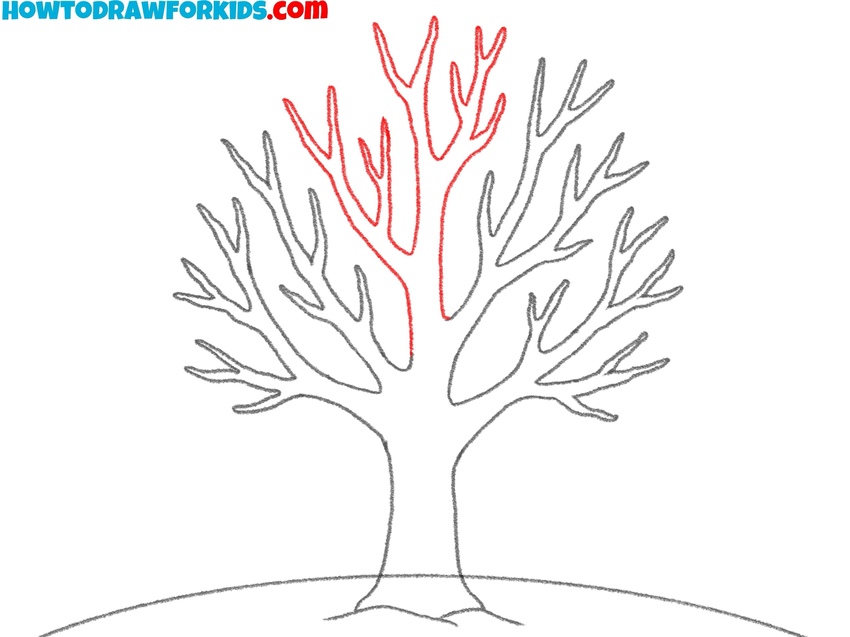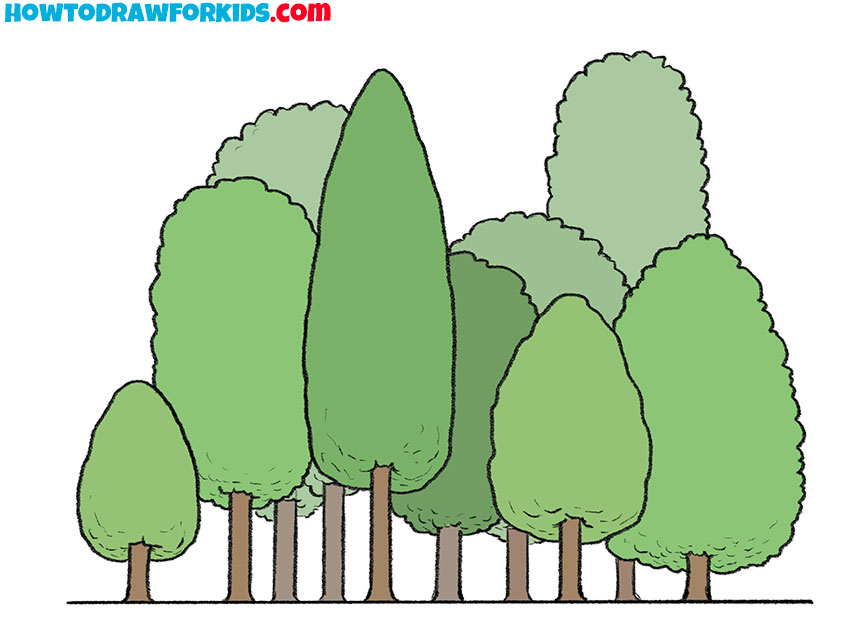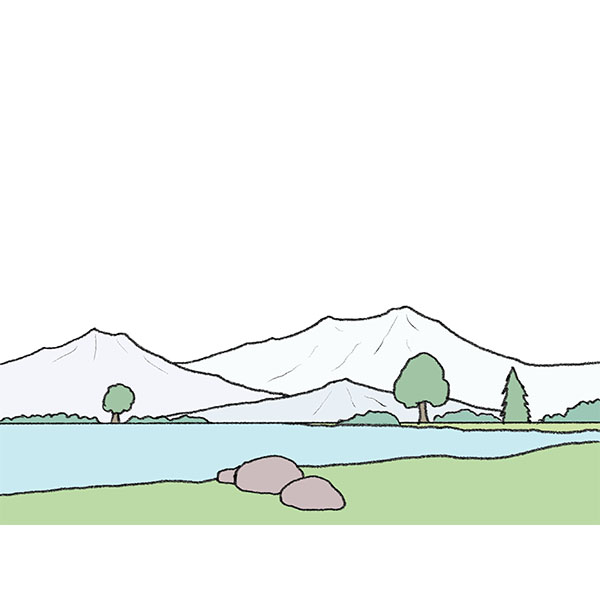How to Draw a Winter Tree
In this lesson, I’ll give you two tutorials that show how to draw a winter tree both with snow on its branches and without it.


How to Draw a Winter Tree: Introduction
I suggest you complete a new fascinating lesson on the topic of natural objects, and now you will learn how to draw a winter tree step by step. Here the tree has a wide trunk and branches of different sizes. There are no leaves on the winter tree, and they will appear only in early spring.
Freehand lines are allowed in this tutorial, so the size and shape of the branches may differ from my example. The main thing is to remember the sequence of steps so that in the future you can easily draw any tree if necessary.
Before you start this tutorial on how to draw a winter tree, you may want to check out the basic tutorial on drawing a tree with green leaves. This will help you get familiar with the basics that you will also use in this tutorial.
Winter Tree Drawing Tutorial
Materials
- Pencil
- Paper
- Eraser
- Coloring supplies
Time needed: 30 minutes
How to Draw a Winter Tree
- Draw the snowy ground line.
When drawing a winter tree, it helps to first set the ground it will grow from. Lightly sketch a gentle curved line across your paper to represent the snow-covered earth. Don’t make it too straight, since real snow usually lies in uneven drifts.

- Draw the trunk of the tree.
Now begin shaping the trunk of the tree. Draw two uneven vertical lines that widen as they meet the snowy ground. At the bottom, add a few subtle root-like extensions resting on the snow. This is important for a winter tree drawing because the roots are usually visible when the ground is bare.

- Add the first branches.
With the trunk in place, begin sketching the first branches. Draw a few thick arms stretching out of the trunk and splitting into smaller shapes. Since this is a winter tree, the branches are bare. Avoid making them perfectly symmetrical, because real trees always have some irregularity.

- Sketch more spreading branches.
Once the main limbs are drawn, it’s time to add smaller branches. Sketch several medium-sized branches sprouting outward. Branches almost always get thinner the further they go, like rivers dividing into streams. Remember, the tree has no leaves in winter, so all these smaller branches will be clearly visible.

- Draw the middle branches of the winter tree.
Now continue adding even more branches, filling in the middle part of the winter tree. From my teaching, I’ve noticed many students are hesitant to overlap lines, but overlapping is what makes the tree feel three-dimensional. Keep your branches varied – some short, some long.

- Complete the upper branches.
Move upward and fill in the top section of the tree with finer branches. Sketch thinner lines that fork into several small twigs. Since you’re drawing a winter tree, these upper branches should look almost fragile, as though they could break under the weight of snow.

- Add snow resting on the branches.
At this stage, start sketching small rounded shapes along the tops of the larger branches to represent snow resting on them. Snow tends to settle on the upper side of the branches, so place your lines accordingly, following the natural curve of the tree. Keep the shapes irregular.

- Add texture to the tree trunk.
Go back to the trunk and add texture. Draw a few vertical lines to illustrate bark. These should be light, uneven, and organic, since tree bark in winter has cracks and ridges. Also, don’t forget to erase the guidelines from your drawing and trace the tree.

- Add brown and light blue tones to the sketch.
Color your drawing of a winter tree using shades of brown for the trunk and branches, keeping the colors muted since this is a winter tree. You can also add light blue or gray to the snow on the branches and beneath the tree to represent snow.

How to Draw a Winter Tree Without Snow
As an alternative to the main winter tree tutorial, here is another method that shows how to draw a winter tree without any snow covering the branches or the ground. This method shows the bare structure of the tree.
First, sketch the tree trunk using two irregular shapes for the side edges. Add the first main branches, then gradually build smaller branches, splitting them into thinner and sharper tips. Continue filling in the crown with more branches.
You can add details like knots and cuts inside the larger branches for realism. Also, you can draw vertical lines along the trunk for texture. Finish your drawing by coloring it in shades of brown.

Conclusion
The defining detail of this drawing is the season itself. By adding snow along the branches, you’ve transformed a simple bare tree into a scene that clearly belongs to winter. This kind of study is especially useful if you want to practice drawing nature across different times of the year – each season has its own textures and shapes worth noticing.
If you’d like to keep going with similar themes, I recommend checking out my tutorial on drawing a pine tree, which gives another perspective on winter landscapes. You may also enjoy practicing with a snowman drawing tutorial or even trying Christmas tree coloring pages.






